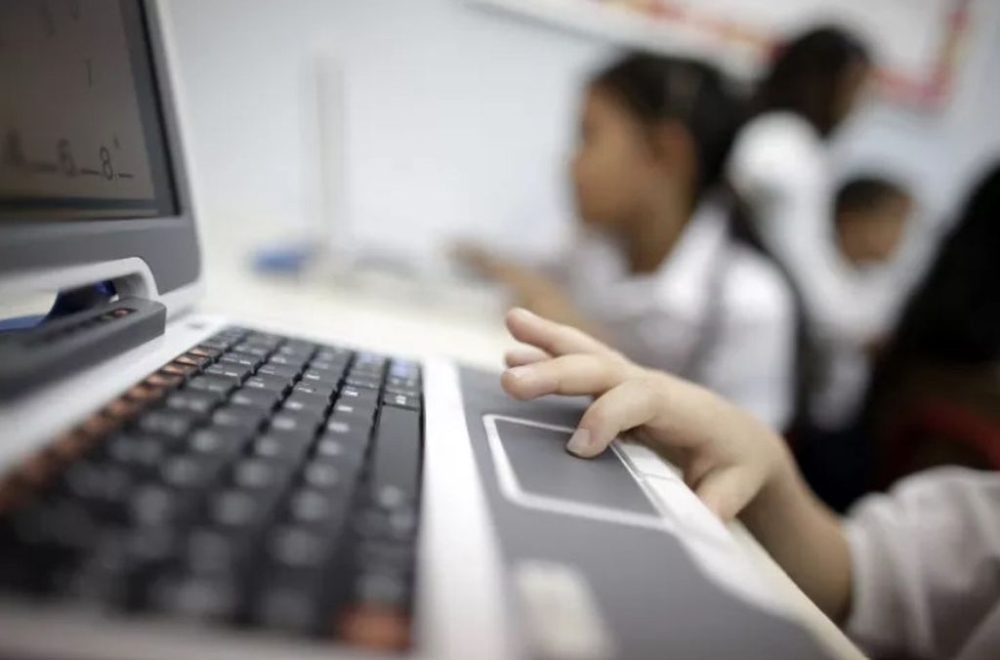Imagine discovering disturbing images online that resemble your child, yet no camera was used, and no real child was present. These images, created using artificial intelligence, are entirely fake, but the psychological and legal damage is very real.
AI threats have evolved from fake celebrity deepfakes to targeting children, with AI-generated child sexual abuse content increasingly appearing online.
Tools like Stable Diffusion, OpenAI’s Sora and generative adversarial networks (GANs) enable offenders to create realistic but fake images – no camera or real victim involved – yet the harm is real[1].
In Malaysia and worldwide, technology and social media have increased access to and the spread of child sexual abuse materials (CSAM).
Advancements in current technological platforms have made it easier for offenders to access and share child sexual exploitation materials either by downloading or uploading them on social media or websites. This accessibility encourages cyber sexual crimes. – Royal Malaysia Police[2]
In 2024 alone, Childline Foundation received 16,328 reports of CSAM in Malaysia, with nearly 16,000 referred to law enforcement involving victims aged 7 to 13[3].
This silent threat is growing, putting more children at risk while the law races to catch up.
The Malaysian Landscape: A Digital Dilemma
In Malaysia, the digital world is becoming increasingly dangerous for children.
In 2022, an estimated 100,000 internet-using children aged 12-17, about 4%, experienced Online Sexual Exploitation and Abuse (OCSEA). This includes blackmail, coercion, grooming through gifts or money, and the non-consensual sharing of images[4].
Girls aged 13-15 are most often targeted, but boys are increasingly at risk. The abuse typically occurs on popular platforms like WhatsApp, Facebook, and Messenger, with 24% of children exposed to unwanted sexual content[4]. Offenders are often individuals known to the child.
A young survivor of Online Child Sexual Exploitation and Abuse (OCSEA) shared how threats and manipulation were used to force continued abuse. They recalled being told, “Don’t tell your family. If you do, I’ll come after you,” which left them feeling too afraid to speak out and compelled to stay silent[5].
A 2025 case in Malaysia laid bare an alarming reality: two men were convicted of possessing over 50,000 files of CSAM – described by child rights advocates not as pornography, but as criminal documentation of child rape and exploitation. Despite the scale and severity, the offenders were fined just RM3,000 and RM6,000, sparking public outrage and renewed calls for stronger legal action[6].

Even “grey area” exploitation is becoming more visible. Influencer Mekyun recently exposed a Facebook group called Group Budak2 Sekolah Rendah, where over 12,000 members shared schoolchildren’s photos alongside lewd comments. There was no explicit content, but the intent was clearly predatory. It’s a sobering reminder that predators don’t always need nudes to sexualise a child online[7].
While Malaysia has taken legislative steps to address CSAM, enforcement remains a critical concern.
Legal Loopholes: Navigating Uncharted Waters
Malaysia has some of the strongest laws in Asia addressing both real and AI-generated child sexual abuse material (CSAM), with several key statutes already covering synthetic content[8]:
- The Sexual Offences Against Children Act 2017 (SOAC) makes it a crime to produce, share, or possess any visual, audio, or written material that sexually exploits children, including AI-generated content.
- Section 292 of the Penal Code bans the distribution of obscene materials, which includes manipulated or fake images involving minors.
- The Communications and Multimedia Act 1998 gives authorities the power to act against online platforms or individuals spreading digital CSAM.
- The Online Safety Act 2024 is a newer law designed to protect children from emerging threats like deep fakes. It requires digital platforms to be licensed and to follow strict content moderation rules.
- The Child Act 2001 and the Child (Amendment) Act 2016 focus on child care, protection, and rehabilitation, emphasising family-based care, greater child participation in decisions, and stronger responses to abuse and neglect.
However, the problem isn’t always the law – it’s enforcement.
In the 2025 case involving over 50,000 CSAM files, police couldn’t identify all the suspects due to missing digital evidence and weak forensic capabilities. Offenders often hide behind VPNs, encryption, or cryptocurrency, making them harder to track[6].
Meanwhile, the government is reportedly reviewing laws that would place more responsibility on parents to monitor their children’s online activity[9].
Internationally, countries like the UK are moving ahead with legislation to criminalise AI tools used to generate CSAM, with penalties of up to five years in prison, signalling a global shift toward closing legal loopholes around AI-driven abuse[10].
Government Response: A Race Against Time

Recognising the scale of the crisis, the Malaysian government has taken steps, though some say they’re too slow and too small.
Taskforces led by the Royal Malaysia Police’s D11 division, the Malaysian Communications and Multimedia Commission (MCMC), and CyberSecurity Malaysia have ramped up collaboration to trace offenders and improve forensic capabilities. In 2024, the Ministry of Women, Family and Community Development launched a new National Child Online Protection Policy, promising enhanced AI monitoring tools, platform accountability, and better support for survivors. Malaysia is also cooperating regionally through ASEAN to tackle cross-border child exploitation.
Still, key gaps remain. Enforcement agencies often lack the training and resources to respond effectively. Sentencing for CSAM crimes remains shockingly light, and parents who are expected to be the first line of defence – often lack the digital fluency to recognise signs of grooming or abuse.
As AI continues to evolve faster than policy, the question remains: can we outpace the predators?
Safeguards and Support: Who’s Protecting the Children?

Amid rising threats, Malaysia is not without its defenders. Child protection NGOs, school-based initiatives, and digital literacy campaigns are working hard to push back against the tide.
Childline Malaysia continues to be a critical 24/7 reporting and support channel (via 15999 or WhatsApp). NGOs such as Protect and Safe The Children are offering trauma-informed care, legal aid, and educational outreach in communities.
Meanwhile, digital literacy programmes like Safe Internet Campaign and CyberSAFE in Schools aim to equip students, parents, and teachers with the skills to navigate online threats.
While some schools are integrating digital safety and consent education, this is not yet standard across the country. And for children in underserved or rural areas, access to such support remains a major barrier, widening the protection gap.
What Can You Do If You Encounter Online Child Sexual Exploitation?
Online child sexual exploitation is a serious crime. If you come across suspicious content, behaviours, or if a child opens up to you, your actions could help stop the abuse.
Here’s how you can respond, safely and responsibly[16]:
- If you’re in direct contact with the child, encourage them to speak to a trusted adult.
- Preserve all evidence by taking time-stamped screenshots, saving messages or images, and avoid deleting anything.
- Report immediately to the police, Malaysian Communications and Multimedia Commission (MCMC), and CYBER999:
>> MCMC Hotline: 1800-188-030 | WhatsApp: 016 220 6262
>> CYBER999 Hotline: 1-300-88-2999 (office hours) | 019 266 5850 (24/7)
>> Childline Malaysia/Talian Kasih Toll-free number: 15999 (24 hours) | WhatsApp: 019 261 5999
- Encourage or assist the child to get professional help to recover from trauma:
>> Women’s Aid Organisation Hotline: 03 3000 8858 | WhatsApp: 018 988 8058
>> Protect and Save the Children Hotline: 03-7954 4818 | protect@psthechildren.org.my
>> Childline Foundation Hotline: 016 333 4228
Professional help can make all the difference in helping the child rebuild trust, regain confidence, and recover emotionally. Your quick action could save a child from prolonged harm.
Don’t wait. Don’t scroll past. Don’t look away. Every click, every report, and every conversation matters. Whether you’re a parent, teacher, friend, or just someone online, you have the power to protect.
Explore Our Sources:
- Manjeevan Seera. (2025, February 25). Digital child abuse: Deepfakes and the rising danger of AI-generated exploitation. Monash Lens. Link
- Harry Beaty, G., & Salehuddin, S. (2024, December 2). The growing threat of online child exploitation. Link
- Malay Mail. (2025, February 15). Over 16,000 reports on child sexual abuse material last year, says NGO director. Malay Mail. Link
- Protecting children in Malaysia from online sexual exploitation and abuse: The way forward. (2022). Link
- Morden, Z. (2022, September 29). Study estimates up to 100,000 kids may be victims of online sexual exploitation, abuse last year. Malay Mail. Link
- Free Malaysia Today. (2025, April 4). 4 nabbed over possession of 50,000 files of child pornography. Link
- The Rakyat Post. (2025, June 11). 12K members‑strong paedophile FB group disappears after Mekyun, cikgu Fadli & Caprice raise alarm. Link
- Women’s Centre for Change. (n.d.). Online violence: Laws in Malaysia. Link
- New Straits Times. (2025, June 4). Azalina: Parents may soon be legally required to monitor children’s online activities. Link
- Savage, M. (2025, February 1). AI tools used for child sexual abuse images targeted in Home Office crackdown. The Guardian. Link


